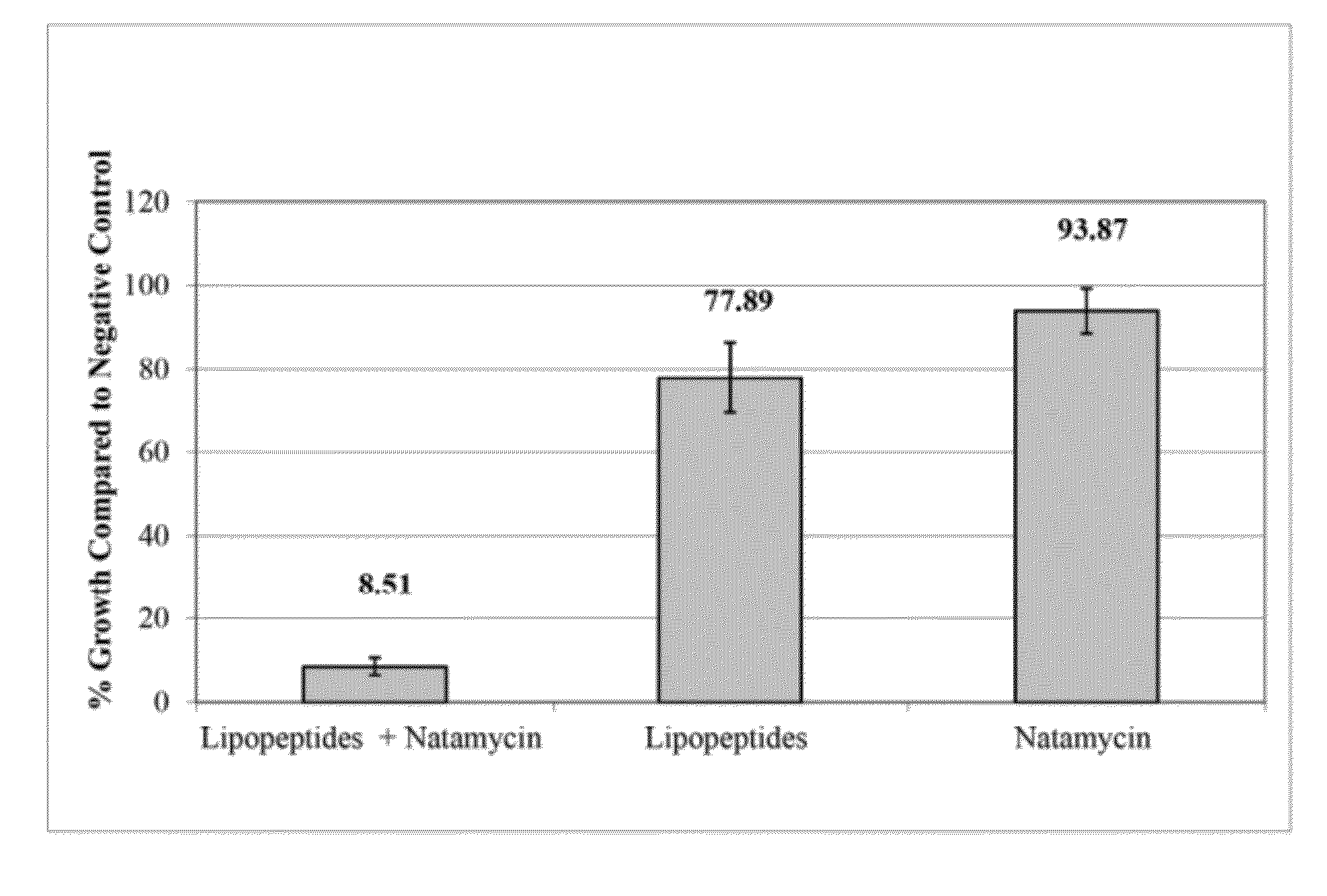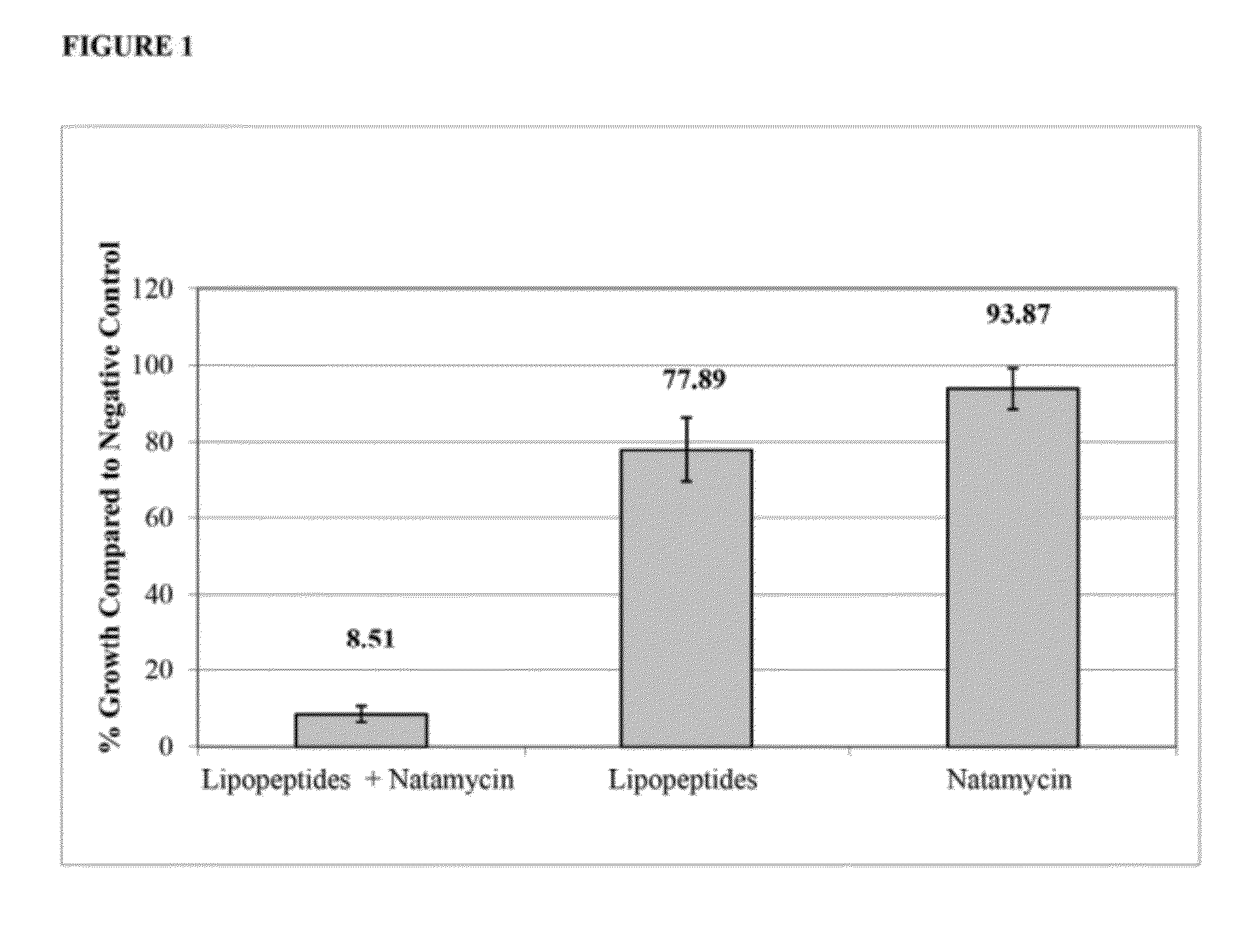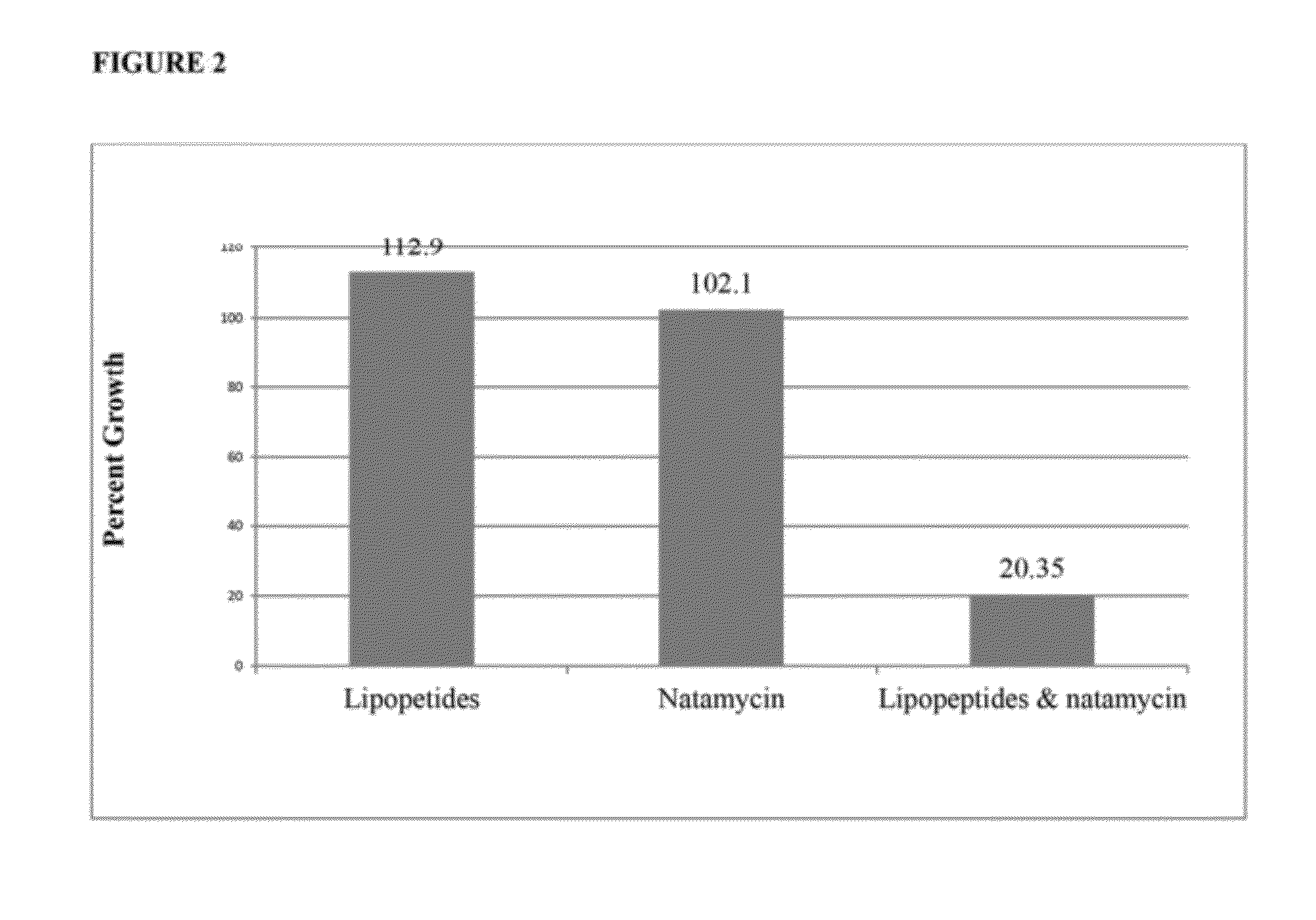Synergistic combinations of polyene fungicides and non-ribosomal peptides and related methods of use
a technology of non-ribosomal peptides and polyene fungicides, which is applied in the direction of biocides, drug compositions, peptide/protein ingredients, etc., can solve the problems of food-borne diseases, fungal infections of both humans and animals, and crop yield reduction, so as to achieve low resistance and less toxic
- Summary
- Abstract
- Description
- Claims
- Application Information
AI Technical Summary
Benefits of technology
Problems solved by technology
Method used
Image
Examples
example 1
Synergistic Effect of Lipopeptides and Natamycin Against Saccharomyces cerevisiae
[0077]A combination of lipopeptides and natamycin was tested for efficacy against Saccharomyces cerevisiae, which is generally recognized as a model organism for testing activity against fungi and which is closely related to Candida. See Smits, G J, et al., “Stress Tolerance in Fungi—To Kill a Spoilage Yeast,”Current Opin Biotechnol., 16(2): 225-30, (2005) and Castrillo, J I, et al., “Yeast as a Touchstone in Post-Genomic Research: Strategies for Integrative Analysis in Functional Genomics,”J Biochem Mol Biol., 37(1): 93-106, (2004).
[0078]The lipopeptides used were a complex mixture of iturin-type compounds, plipastatin-type compounds, and surfactins partially purified from the fermentation broth of Bacillus subtilis QST713. Seed flasks containing Luria Broth (LB) were inoculated with the QST713 strain, and these flasks were grown overnight at 30° C. The next day, aliquots from the seed flask were inoc...
example 2
Synergistic Effect of Natamycin and Lipopeptides Against S. cerevisiae Using Lipopeptides Obtained from Commercially Available Product
[0082]This study, which is similar to that described in Example 1, is conducted using a crude extract of lipopeptides obtained from SERENADE® MAX fungicide or SERENADE® ASO fungicide as a starting point (rather than from unformulated fermentation broth of Bacillus subtilis QST713). The SERENADE® products are commercially available, and their active ingredient is Bacillus subtilis QST713. A crude extract of lipopeptides is obtained by acidifying SERENADE®ASO (or SERENADE® MAX, dissolved in water) to pH 2, centrifuging and extracting the resulting pellet with an organic solvent mixture. The resulting lipopeptides are combined with natamycin as described above and this mixture tested for activity against S. cerevisiae. The same results as obtained above are expected.
example 3
Synergistic Effect of Natamycin and a Crude Extract of Lipopeptides Against Penicillium expansum
[0083]The effect of (i) natamycin (Haorui Pharma-Chem. Inc.), (ii) a crude extract of lipopeptides from Bacillus subtilis QST713 (prepared as described in Example 1), and (iii) a combination of natamycin and a crude extract of lipopeptides on Penicillium expansum was investigated. A liquid fungal growth assay was performed in 96-well plates to determine whether the combination of lipopeptides and natamycin is synergistic in inhibiting fungal growth. All procedures were conducted aseptically.
[0084]For each 96 well plate, three separate additions were made to each well. First, 100 μl of potato dextrose broth w / 100 ppm chloramphenicol was added. Then 25 μl of each sample (lipopeptides, natamycin, or combo from dilution plate) was supplemented. Finally, 50 μl of DI H2O was added to the blank plate (the plate intended to be left blank for an OD reference) OR 50 μl of 105 fungal inoculum was a...
PUM
| Property | Measurement | Unit |
|---|---|---|
| molecular weight | aaaaa | aaaaa |
| molecular weight | aaaaa | aaaaa |
| molecular weight | aaaaa | aaaaa |
Abstract
Description
Claims
Application Information
 Login to View More
Login to View More - Generate Ideas
- Intellectual Property
- Life Sciences
- Materials
- Tech Scout
- Unparalleled Data Quality
- Higher Quality Content
- 60% Fewer Hallucinations
Browse by: Latest US Patents, China's latest patents, Technical Efficacy Thesaurus, Application Domain, Technology Topic, Popular Technical Reports.
© 2025 PatSnap. All rights reserved.Legal|Privacy policy|Modern Slavery Act Transparency Statement|Sitemap|About US| Contact US: help@patsnap.com



